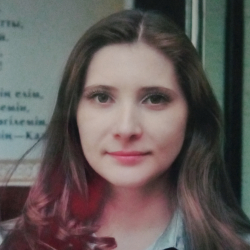Просмотр содержимого документа
«Heat Capacity lesson presentation»

Heat capacity

Heat Capacity
aluminum
zinc
copper
lead
iron
paraffin
The heat capacity of a substance is the quantity of heat needed to raise its temperature one degree Celsius


Specific heat cal/(g x °C) - calories per gram per degrees Celsius
The number of calories required to raise the temperature of one gram of a substance by one degree Celsius

Specific heat of water 1.00 cal/(g x °C)

Higher specific heat means that the substance takes longer to heat up and cool down
Table 3: SPECIFIC HEAT cal/(g x °C).
Substance
ammonia
Specific heat
water
1.20
1.00
alcohol
ice
0.55
0.50
steam
aluminum
0.49
iron
0.22
0.11
copper
mercury
0.092
0.033
lead
0.031

The total heat content of a body
H = SH x ∆T x m
H = Heat
SH = Specific Heat
M = mass

A 200-liter tank of water cools from 60°C to 20°C. how much heat is released?
= 1.00 cal/(g x °C) x (60°C-20°C) x 2.00 x 10 5 grams
= 8.00 x 10 6 cal, or 8000 kcal
m = 200 liters x 1000 grams/liter
= 2.00 x 10 5 grams
SH = 1.00 cal/(g x °C)
∆ T = 60°C-20°C
H = ?

The law of heat exchange : the amount of heat given off by a hot substance equals the heat received by a cold substance
Mixture neither gains nor loses heat.
Hot water loses 4000 cal.
Cold water gains 4000 cal.
10°C
90°C
50°C
200 g
100 g
100 g
+

calorimeter


Not only does water have a much higher capacity for storing heat energy, but water can also release a large amount of heat without a corresponding large drop in temperature.

Latent heat of vaporization
Latent Heat of Vaporization is the amount of heat needed to change one gram of substance at its normal boiling temperature into a gas at the same temperature

Raising the temperature from 0°C to 100°C requires 100 calories , while changing it from a liquid to a gas requires 540 calories .
1 cal = 4.184 J
The latent heat of vaporization for water is 540 calories per gram.

Invisible steam
Condensed water vapor

Latent heat of fusion
Latent Heat of Fusion is the amount of heat needed to change one gram of a solid substance at its normal melting temperature into a liquid at the same temperature


Evaporation
30°C average speed
100°C rapid evaporation

Evaporation and cooling


The water boils and freezes at the same time








































